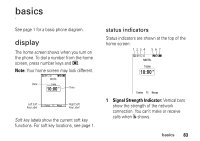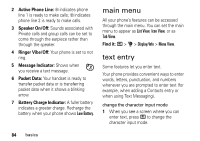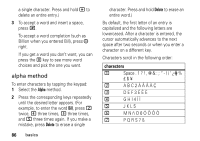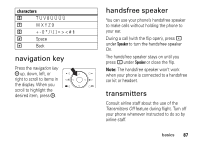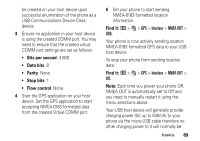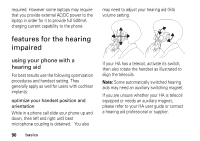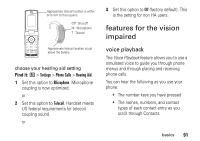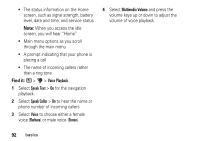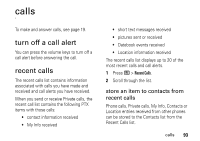Motorola Stature i9 Boost User Guide - Page 94
use GPS with map, software - to pc
 |
View all Motorola Stature i9 manuals
Add to My Manuals
Save this manual to your list of manuals |
Page 94 highlights
Transmitters Off turns off your phone's calling features in situations where wireless phone use is prohibited, but you can use the phone's other non-calling features when Transmitters is turned Off. Find it: / > u > Advanced > Transmitters > Off. use GPS with map software Your phone is enabled with a highly-capable GPS receiver that sends location information to a USB port on a PC, laptop, or PDA. Note: No serial port connectivity is provided by your phone. Applications on the host device which are expecting to receive the GPS location information via a serial port must instead use a Virtual Serial Comm Port. The data sent to the host device is formatted as prescribed in the National Marine 88 basics Electronics Association 0183 V3.0 (NMEA0183) standard. As such it supports the following sentences: GGA, GLL, GSA, GSV, RMC, and VTG. This handset is not a full NMEA-0183 compliant device supporting electrical RS-422/RS-232 connectivity as dictated by the NMEA-0183 standard. Consequently it's unsuitable for conventional marine NMEA-0183 equipment use. Its intended use is for normal "terrestrial" mobile users who want to enable their USB hosting computing devices such as a PC, laptop or PDA with the phone's highly-capable GPS functionality. get connected 1 Open the phone's micro-USB port and insert a micro-USB cable into the port. 2 Insert the other end of the micro-USB cable into a vacant USB receptacle of your host device. A virtual USB Comm Port will



